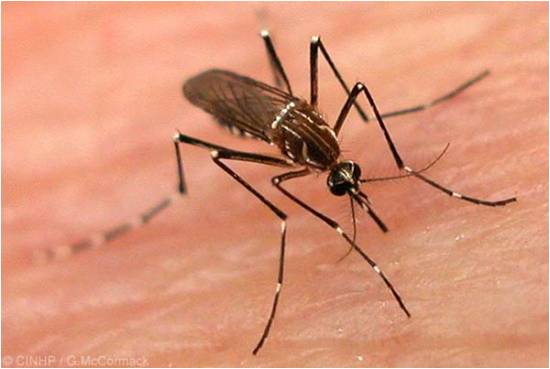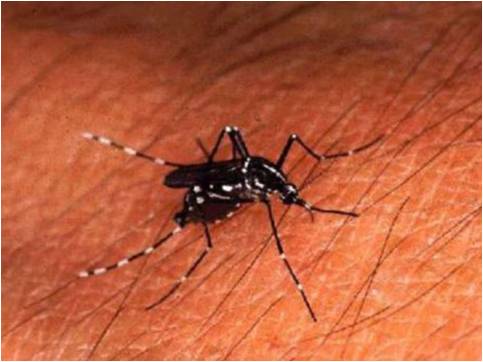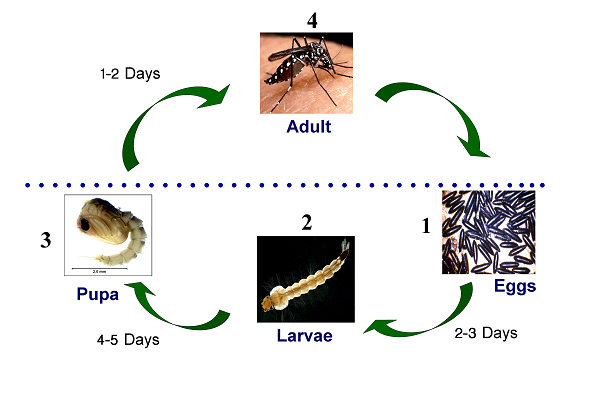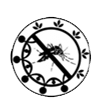There are about 140 species of mosquitoes in Sri Lanka. Out of them Aedes aegypti and Aedes albopictus mosquitoes transmit the dengue virus to humans. These two types of mosquitoes can be differentiated by using the markings on their bodies.
 |
 |
| Aedes aegypti | Aedes albopictus |
 |
|
Shown below is the life cycle of the Aedes mosquito.
Life Cycle

There is an aquatic phase (eggs, larvae, pupae) and a terrestrial phase (adults) in the life-cycle of Ae. aegypti and Ae. Albopictus mosquitoes. Female mosquitoes of Aedes aegypti and Ae. albopictus lay their eggs on the inner walls of containers with water. The eggs hatch to larvae (picture 1, inset) when water inundates the eggs by any means, such as rains or filling water by people. The mosquito larvae feed on microorganisms and particulate organic matter. The larvae shed their skins three times and develop first to fourth instars. The 4th instar larva develops to pupa. Pupae do not feed and develop to form adult mosquitos. The entire life cycle lasts 8-10 days at room temperature, depending on the level of feeding.
The eggs of Ae. aegypti and Ae. albopictus can withstand desiccation for several months and also, the dengue virus can go to the next generation via the eggs (transovarian transmission). These are major threats for dengue control in the country.






